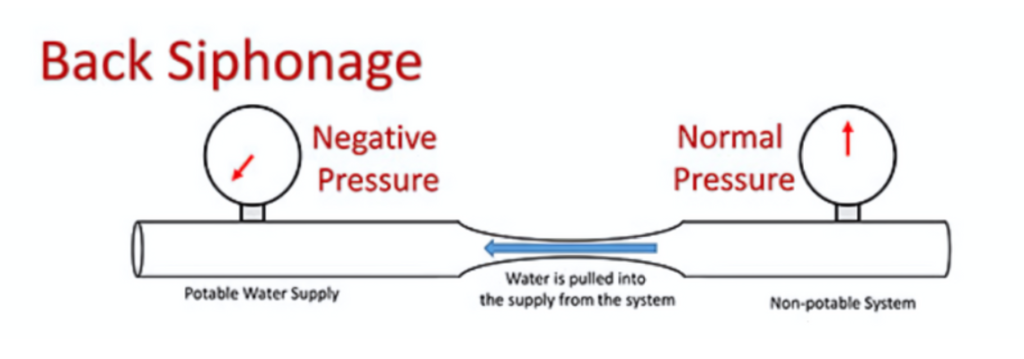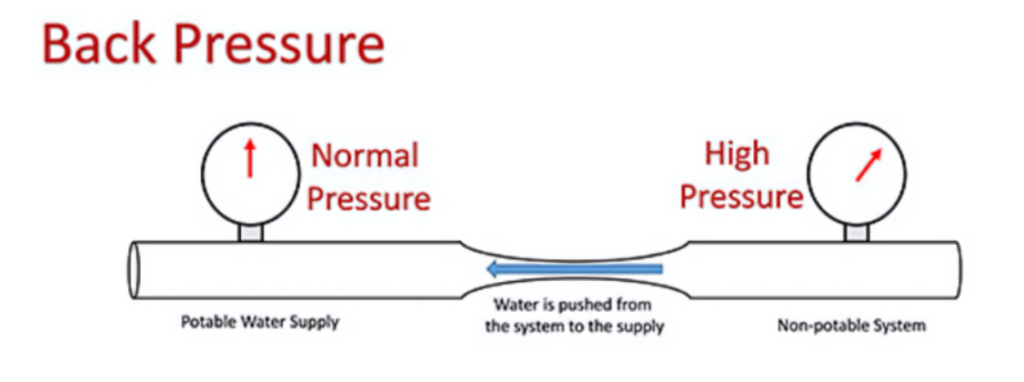Understanding the Risks of Backflow: A Critical Guide for Homeowners and Businesses
Water is a fundamental part of our daily lives, flowing seamlessly through our plumbing systems to provide clean, potable water whenever we need it. However, this flow is susceptible to serious disruptions known as backflow, a condition that can compromise the quality of our water and pose significant health risks. But what exactly leads to backflow, and how can we prevent it?
The Dual Threats of Backflow: Back-Siphonage and Back-Pressure
Backflow can manifest through two primary mechanisms: back-siphonage and back-pressure. Each of these conditions disrupts the normal flow of water, allowing contaminated water to enter the clean water supply. Let’s dive deeper into these mechanisms:
Backflow can occur in two main ways:
Back-siphonage – Imagine a sudden drop in water pressure within your plumbing system, perhaps due to a break in the water main or heavy demand during a fire fighting effort. This creates a vacuum effect, reversing the direction of water flow and potentially drawing contaminated water back into your home or business’s clean water supply. This phenomenon, known as back-siphonage, highlights the vulnerability of our plumbing systems to unexpected pressure changes.

Back-pressure – On the flip side, back-pressure occurs when the pressure within a non-potable system (such as irrigation systems, boilers, or industrial equipment) exceeds that in the potable water supply. This pressure differential can force contaminated water upstream, mixing with the clean water intended for drinking, cooking, and bathing. Whether due to thermal expansion, pump adjustments, or other causes, back-pressure represents a potent risk to water purity.

Mitigating the Risks: Your Path to Safety
The implications of backflow for health safety and system integrity cannot be overstated. Contaminated water can carry bacteria, chemicals, and other hazardous substances into our homes and businesses, posing serious health risks. To combat these dangers, proactive measures are essential.
By partnering with experts like 123 Backflow Testing, you can ensure your plumbing system is equipped to fend off the threats of back-siphonage and back-pressure. Our comprehensive approach includes:
- Appropriate System Design: Tailoring your plumbing system to minimize backflow risks from the outset.
- Backflow Prevention Devices: Installing specialized devices designed to block contaminated water from reversing into the clean supply.
- Routine Maintenance and Monitoring: Regular check-ups and system adjustments to maintain optimal backflow prevention.
Conclusion
In the battle against backflow, knowledge and preparation are your best defenses. Understanding the mechanisms of back-siphonage and back-pressure is the first step toward safeguarding your water supply. With the right strategies and support from 123 Backflow Testing, you can protect your health, your home, and your peace of mind.
